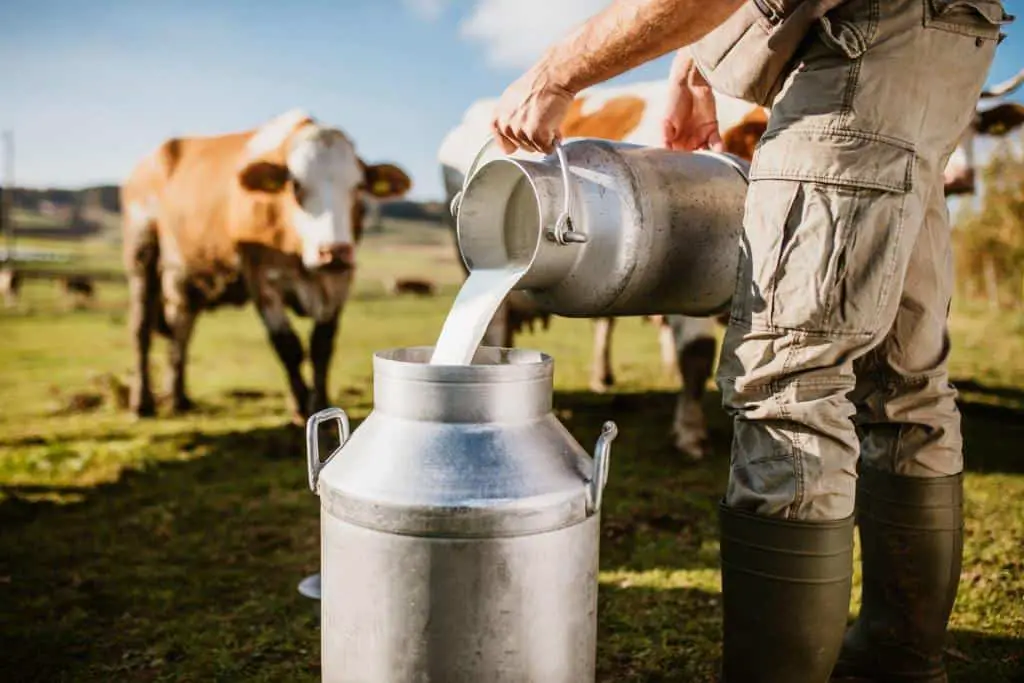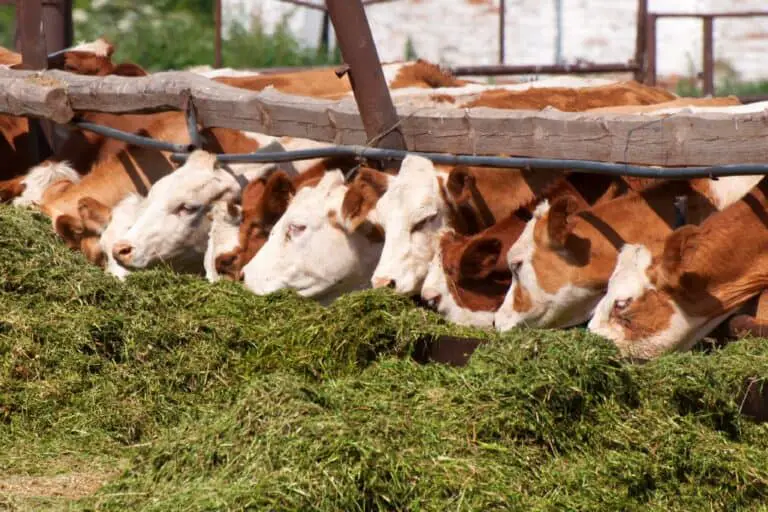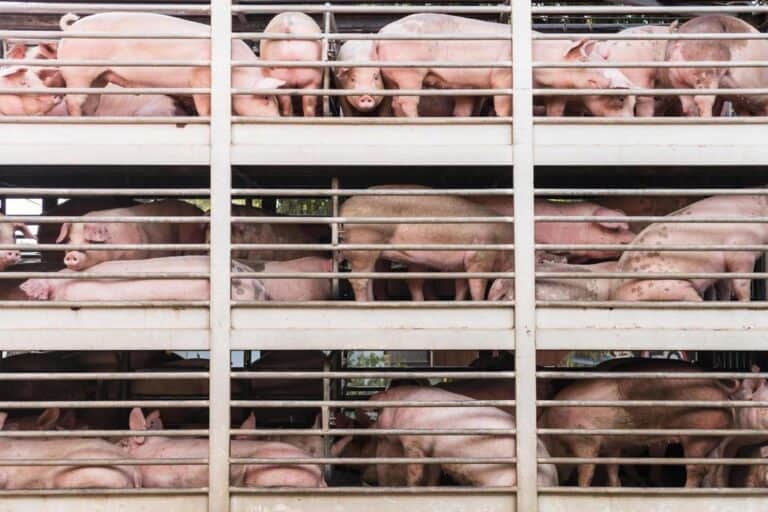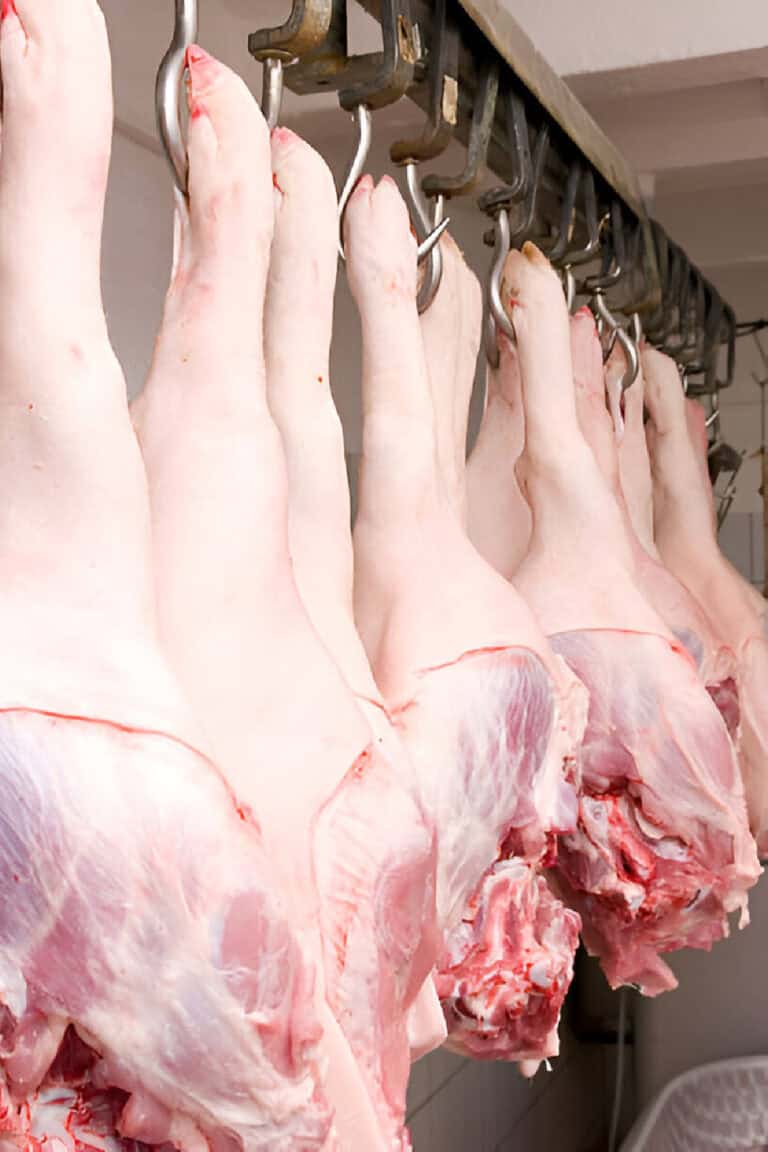What Percentage of Crops to Feed Livestock? Mixed Crop Livestock

Welcome to the fascinating world of mixed crop-livestock systems! In today’s agricultural landscape, finding the perfect balance between feeding a growing population and sustaining livestock production is a challenge that demands our attention.
Have you ever wondered what percentage of crops should be allocated for feeding livestock? Well, you’re about to embark on a journey to unravel this captivating question.
In this article, we will dive deep into the intricate web of mixed crop-livestock systems and explore the optimal percentage of crops that should be dedicated to feeding our beloved farm animals.
These systems, also known as integrated farming, bring together the best of both worlds: crop production and livestock rearing. But striking the right balance between providing for human consumption and ensuring adequate nutrition for our livestock is no easy task.
Join us as we unravel the considerations, factors, and possibilities that shape this intricate puzzle. From land availability to market demands, and from nutritional requirements to environmental sustainability, we will navigate through the diverse elements that influence the allocation of crops in mixed crop-livestock systems.
Understanding Mixed Crop-Livestock Systems
Mixed crop-livestock farming systems, also known as integrated farming or mixed farming, involve the combination of crop production and livestock rearing on the same land. This approach has a rich historical background and continues to be relevant in modern agriculture.
By integrating crops and livestock, farmers can create a mutually beneficial relationship between the two, resulting in a more sustainable and productive farming system.
Importance of Livestock in Mixed Crop-Livestock Systems

Livestock play a crucial role in mixed crop-livestock systems. They provide valuable products such as milk, meat, and eggs, which are essential for human nutrition. Additionally, livestock contribute to the overall sustainability of the farming system by recycling nutrients.
However, the expansion of livestock production also poses environmental challenges, making it crucial to strike a balance between livestock needs and sustainable agricultural practices.
Animal waste can be used as a natural fertilizer, enriching the soil and reducing the need for synthetic inputs. Furthermore, livestock can graze on crop residues and cover crops, effectively turning low-value agricultural byproducts into valuable animal feed.
Crop Allocation in Mixed Crop Livestock Systems
When determining the optimal percentage of crops for livestock feed, several factors come into play. These include the availability of land, the nutritional requirements of livestock, market demands, and the needs of human food consumption.
Striking a balance between crop production for direct human consumption and livestock feed is essential for both food security and environmental sustainability. By carefully allocating crops, farmers can ensure both livestock health and the availability of crops for human consumption.
Determining the Percentage of Crops Allocated to Livestock Feed
To determine the appropriate percentage of crops allocated to livestock feed, farmers employ various approaches and methodologies. They take into account the nutritional needs of different livestock species and consider factors such as feed conversion efficiency and resource optimization.
These calculations help farmers strike a balance between meeting livestock requirements and maximizing crop yields.
1. Land Availability and Productivity
The availability and productivity of land have a significant influence on the percentage of crops allocated to livestock feed. In regions where arable land is scarce, farmers may prioritize crop production for direct human consumption to ensure food security.
On the other hand, areas with abundant land resources may allocate a larger percentage of crops for livestock feed without compromising human food needs.
2. Nutritional Requirements of Livestock
Understanding the nutritional needs of livestock is vital in deciding the appropriate percentage of crops for their feed. Different livestock species have varying dietary requirements, and these requirements should be met to ensure the health and productivity of the animals. Proper nutrition leads to better growth, reproduction, and overall well-being of livestock.
3. Market Demands and Economic Considerations
Market demands play a significant role in determining the percentage of crops allocated for livestock feed. Farmers need to consider the economic viability of livestock production and assess the profitability of investing in animal feed.
If there is a high demand for livestock products in the market, farmers may allocate a larger portion of their crops for feed production to meet consumer needs and generate income.
4. Environmental Impact and Sustainability
Sustainability is a critical aspect of modern agriculture. It is essential to consider the environmental impact of mixed crop-livestock farming systems when determining the percentage of crops allocated to feed livestock.
Sustainable farming practices, such as agroforestry and rotational grazing, can minimize soil erosion, conserve water resources, and reduce greenhouse gas emissions. By adopting sustainable practices, farmers can mitigate the environmental impact of livestock production and create a more resilient farming system.
Examples of Crop Allocation in Mixed Crop-Livestock Systems
As mentioned previously, the allocation of crops in mixed crop-livestock systems can vary depending on specific circumstances and objectives. Here are a few examples of crop allocation in such systems:
- 50% Crop – 50% Livestock Feed: In some regions where both crop production and livestock rearing are equally important, an equal distribution of resources may be appropriate. This approach ensures a balance between food production for human consumption and feed supply for livestock. It allows farmers to meet local market demands for both crops and livestock products while maintaining a sustainable farming system.
- 70% Crop – 30% Livestock Feed: In areas where land resources are limited, and the demand for food crops is high, a higher percentage of crops may be allocated for direct human consumption. This approach prioritizes food security and ensures an adequate supply of staple crops for the local population. The smaller percentage allocated to livestock feed still allows for the integration of livestock into the farming system, taking advantage of their ability to utilize crop residues and produce valuable byproducts.
- 40% Crop – 60% Livestock Feed: In regions with favorable climatic conditions and abundant land resources, a larger portion of crops may be allocated for livestock feed. This approach capitalizes on the potential for extensive grazing systems and allows for the production of high-quality animal products. Farmers can make use of pasture and forage crops, reducing the reliance on external feed sources and maximizing the utilization of available land.
These examples illustrate that the percentage of crops allocated to livestock feed should be context-specific and adaptable to local conditions. Flexibility and the ability to adjust crop allocation based on changing factors such as market demands, environmental conditions, and land availability are key to ensuring the sustainability and efficiency of mixed crop-livestock systems.
Challenges and Trade-offs in Crop Allocation
Crop allocation in mixed crop livestock systems presents several challenges and trade-offs. Farmers must navigate competition for land, water, and other resources, as well as strike a balance between feed quality and quantity. Socioeconomic implications for farmers and communities also need to be considered, as crop allocation decisions can have significant impacts on their well-being.
Sustainable Practices and Alternatives
To address the challenges of crop allocation, sustainable practices and alternatives have emerged. Agroecological approaches promote the integration of crops and livestock, enhancing biodiversity and soil fertility. Crop diversification and innovative technologies for feed production also contribute to more sustainable mixed crop livestock systems.
Environmental Impact of Crop Allocation to Livestock Feed
Crop allocation decisions in mixed crop livestock systems have environmental implications. Land use change and deforestation, water usage and pollution, and greenhouse gas emissions are among the key concerns. It is essential to implement practices that minimize these impacts and strive for sustainable agriculture.
Policy and Regulatory Frameworks
Governments and international organizations have established policy and regulatory frameworks to promote sustainable agriculture in mixed crop livestock systems. These frameworks include regulations, incentives, and certification schemes. Compliance with these guidelines ensures that crop allocation practices align with sustainability goals.
Conclusion
Determining the percentage of crops allocated to feed livestock in mixed crop-livestock systems is a complex task that requires careful consideration of various factors. Balancing crop production for human consumption with livestock feed is crucial for ensuring food security, economic viability, and environmental sustainability.
By integrating crops and livestock, farmers can create a synergistic relationship that maximizes resource utilization and enhances overall farm productivity.
The optimal percentage of crops allocated for livestock feed will vary depending on factors such as land availability, nutritional requirements of livestock, market demands, and environmental considerations. It is important for farmers and policymakers to evaluate these factors and adapt their crop allocation strategies accordingly.
As we strive to build a more sustainable and resilient agricultural system, mixed crop-livestock systems provide a promising solution. By harnessing the benefits of integrating crops and livestock, we can meet the needs of both human food consumption and livestock production, contributing to a more secure and sustainable future.
FAQs
What are the benefits of mixed crop livestock systems?
Mixed crop livestock systems offer several benefits, including enhanced resource utilization, diversified income streams for farmers, improved soil fertility through nutrient cycling, and increased resilience to climate variability.
How do farmers determine the percentage of crops allocated to livestock feed?
Farmers consider factors such as livestock nutritional requirements, feed conversion efficiency, market demands, and economic considerations when determining the percentage of crops allocated to livestock feed.
Are there specific crop varieties suitable for livestock feed?
Yes, certain crop varieties are better suited for livestock feed due to their nutritional composition and palatability. Examples include forage crops like alfalfa, clover, and grasses.
What are the environmental impacts of crop allocation to livestock feed?
Crop allocation to livestock feed can lead to environmental impacts such as deforestation, water pollution, and greenhouse gas emissions. Sustainable practices and efficient resource management can help minimize these impacts.
Can mixed crop livestock systems be sustainable?
Yes, with proper management and adherence to sustainable practices, mixed crop livestock systems can be environmentally and economically sustainable. Practices such as rotational grazing, agroforestry, and organic farming can enhance sustainability.
How does crop allocation affect food prices?
Crop allocation decisions can influence food prices, especially when a significant portion of crops is allocated to livestock feed. Changes in feed availability and demand can affect the overall supply and pricing of crops used for human consumption.
What are the challenges faced by farmers in implementing mixed crop livestock systems?
Farmers face challenges such as resource competition, balancing the needs of crops and livestock, market volatility, and adapting to changing environmental conditions. Knowledge, financial resources, and supportive policies are essential for successful implementation.







